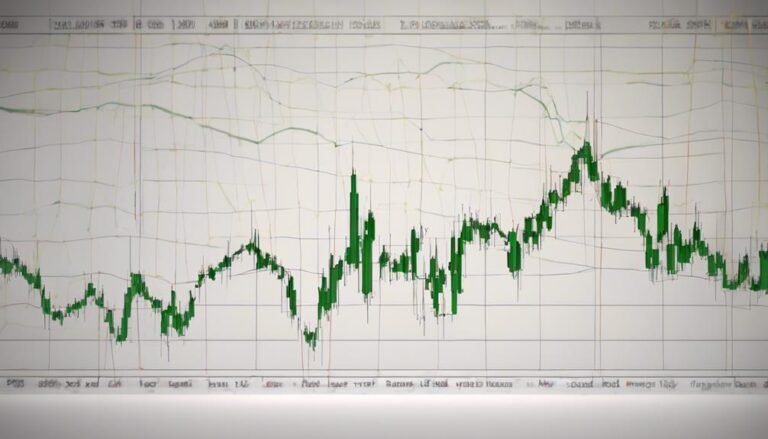Bernie Madoff: Who He Was, How His Ponzi Scheme Worked
Bernie Madoff, a once esteemed figure in finance, masterminded a massive Ponzi scheme that lured investors with the promise of steady returns fueled by new investments, ultimately leading to a devastating collapse in 2008. His scheme relied on a continuous influx of fresh funds to sustain the illusion of profitability, concealing the unsustainable nature of his operations. The revelation of financial irregularities brought to light the deceptive practices Madoff employed. The aftermath saw Madoff sentenced to 150 years in prison and efforts to compensate victims through the Madoff Victim Fund. The repercussions serve as a stark reminder of the importance of due diligence in the financial sector.
Key Takeaways
- Bernie Madoff established a successful investment firm in 1960.
- Madoff orchestrated a Ponzi scheme, deceiving investors for profit.
- The Ponzi scheme relied on new investors' funds to pay returns.
- Anomalies in financial records led to the exposure of the scheme.
- Madoff faced legal consequences, including a 150-year prison sentence.
Bernie Madoff's Early Life and Career
In his early years, Bernie Madoff, a native of Brooklyn, New York, began on a path that would eventually lead to the establishment of Bernard L. Madoff Investment Securities LLC in 1960 alongside his wife, Ruth.
Growing up in Brooklyn, Madoff's upbringing laid the foundation for his future career in finance. He gained recognition as a market maker, being instrumental in the development of the Over-the-Counter (OTC) trading market.
His market maker status eventually led to him becoming the chairman of the Nasdaq stock exchange. This early success in market-making activities set the stage for Madoff's later endeavors in the financial world, culminating in the establishment of his investment firm.
Establishment of the Ponzi Scheme
Upon reaching a pivotal juncture in his financial career, Bernie Madoff orchestrated the establishment of his notorious Ponzi scheme, setting the stage for one of the largest financial frauds in history.
To sustain the scheme, Madoff focused on raising funds by attracting new investors with promises of steady returns. Using deceptive practices, he assured clients of consistent profits while actually using incoming investments to pay off existing investors. This cycle perpetuated the illusion of success and reliability, drawing in more unsuspecting individuals.
The scheme's deceptive nature allowed Madoff to amass significant wealth and maintain an appearance of legitimacy until its eventual collapse in 2008. This establishment phase marked the beginning of a complex web of financial deceit that would unravel with catastrophic consequences.
Mechanics of Madoff's Ponzi Scheme
The mechanics behind Bernie Madoff's Ponzi scheme revolved around enticing new investors with the promise of consistent returns, which were actually funded by the capital of incoming investors, enabling the illusion of profitability to persist. Madoff's deception was rooted in the Ponzi structure, where returns were paid not from actual profits but from the investments of new clients.
This cycle continued, with Madoff using the influx of new funds to provide returns to existing investors, creating the appearance of a successful investment strategy. The scheme relied on a continuous flow of new investors to sustain itself, as withdrawals were met with funds from fresh investments.
This intricate web of deceit allowed Madoff to maintain the facade of a thriving investment firm while concealing the unsustainable nature of his operations.
Unveiling the Ponzi Scheme
Detecting anomalies in financial records, including irregularities in returns and fund allocations, played a pivotal role in exposing Bernie Madoff's elaborate Ponzi scheme. Investors and analysts began to question the consistency and sustainability of the returns promised by Madoff's investment strategy.
The investment approach seemed too good to be true, offering steady, high returns regardless of market conditions, raising suspicions among keen observers. Financial deception became apparent as investigations revealed that Madoff was using new investors' funds to pay returns to existing clients, a classic hallmark of a Ponzi scheme.
The uncovering of these discrepancies highlighted the need for thorough due diligence and scrutiny in the financial sector to prevent similar fraudulent schemes from deceiving unsuspecting investors.
Impact and Legal Consequences
Uncovering the true extent of Bernie Madoff's Ponzi scheme revealed the devastating impact on thousands of investors and led to severe legal consequences for those involved. The financial devastation caused by Madoff's scheme left many investors in ruin, with their life savings wiped out. The legal repercussions were swift and severe, with Madoff himself receiving a 150-year prison sentence and being ordered to forfeit $170 billion. Additionally, Madoff's associates faced legal consequences for their roles in the scheme, further highlighting the seriousness of financial fraud. The aftermath of the Ponzi scheme saw efforts to compensate victims through the Madoff Victim Fund, although the emotional and financial scars left by Madoff's actions may never fully heal.
| Impact | Legal Consequences |
|---|---|
| Financial devastation | Madoff sentenced to 150 years in prison |
| Thousands of investors affected | Associates facing legal repercussions |
| Creation of Madoff Victim Fund | Forfeiture of billions of dollars |
Conclusion
In the wake of Bernie Madoff's Ponzi scheme, the financial world was left reeling from the devastation caused by his deceit. As the dust settles on his legacy of fraud, one adage rings true: 'The bigger they are, the harder they fall.'
Madoff's downfall serves as a sobering reminder of the dangers of unchecked greed and the importance of vigilance in the domain of investments. The repercussions of his actions continue to echo through the halls of finance, a cautionary tale for generations to come.







